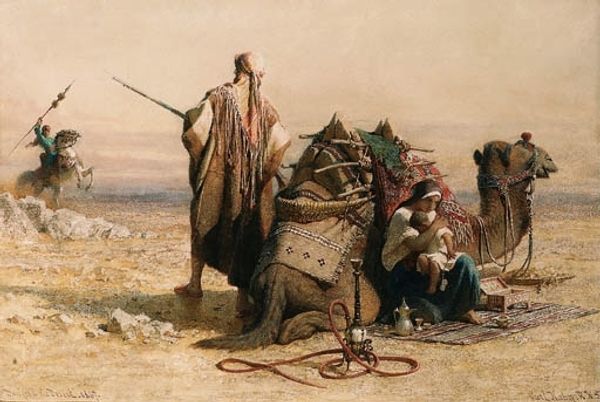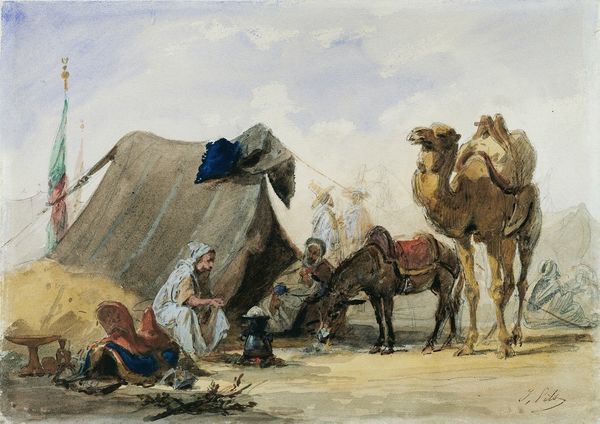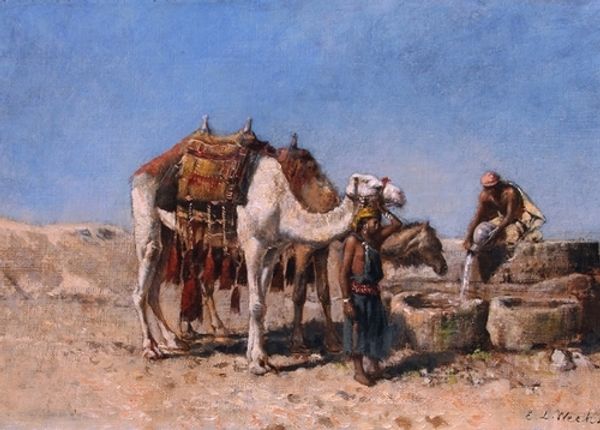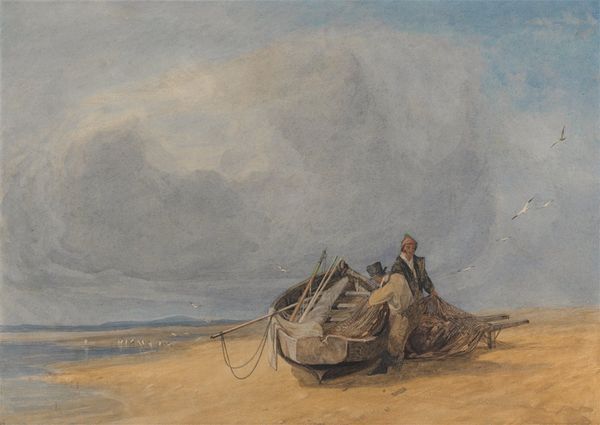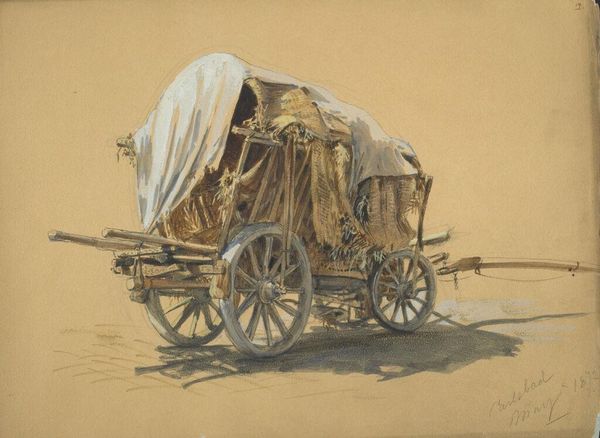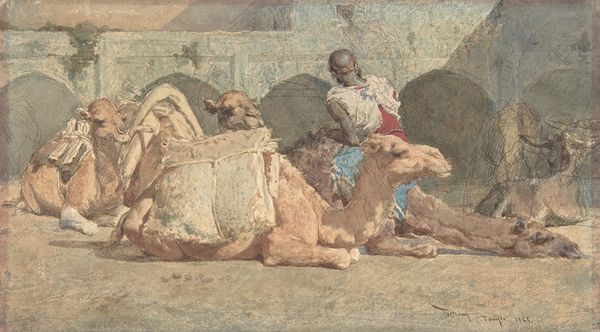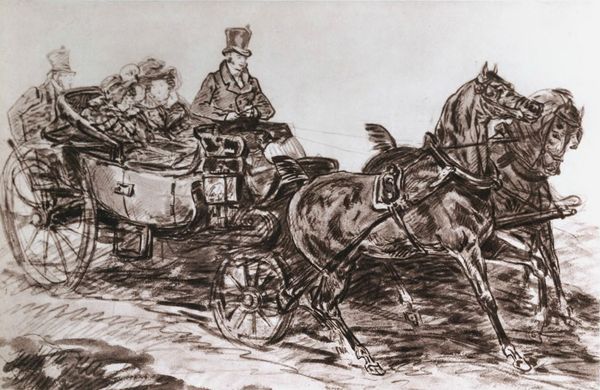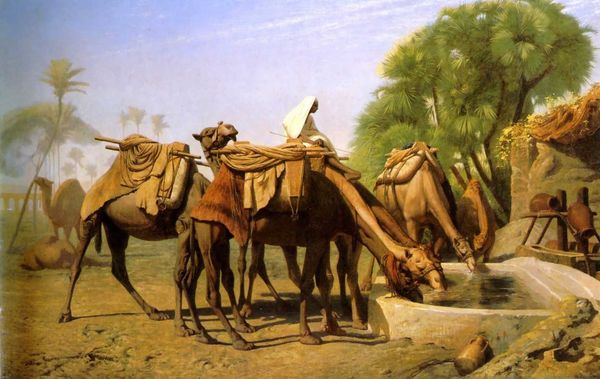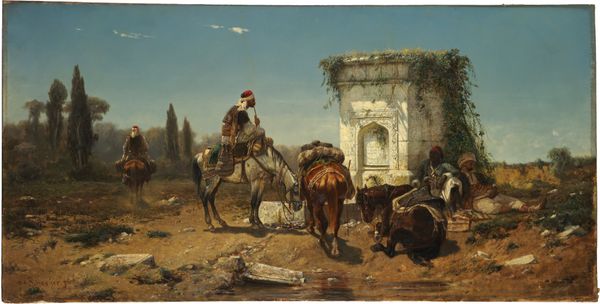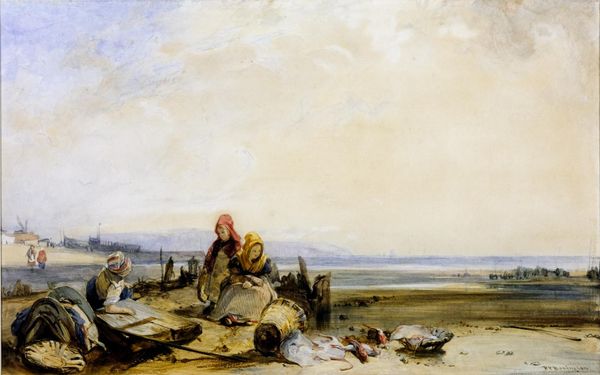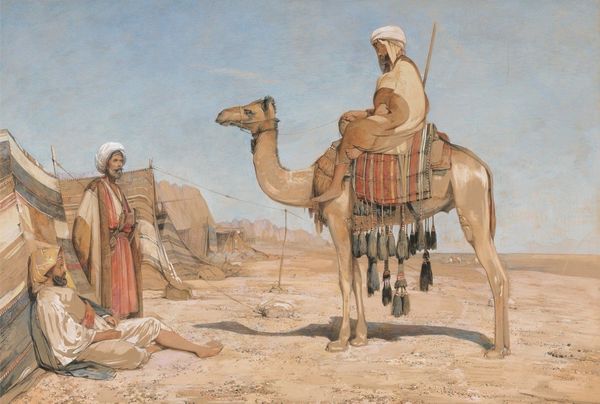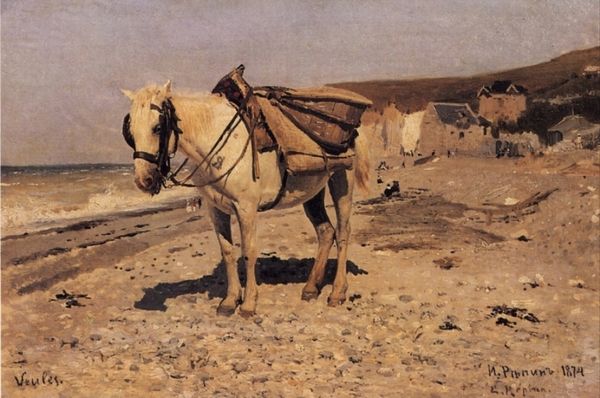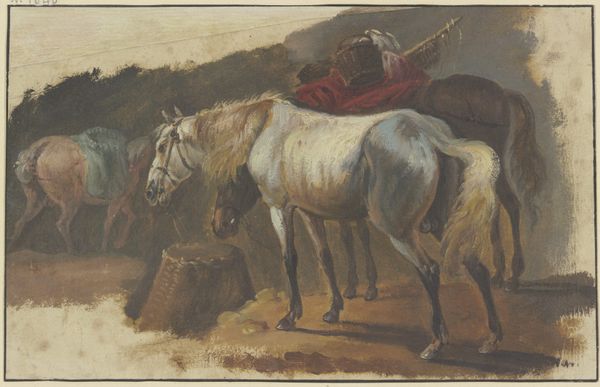
Dimensions: support: 330 x 544 mm
Copyright: CC-BY-NC-ND 4.0 DEED, Photo: Tate
Curator: This is William James Müller's "Camels, a Study in Smyrna," part of the Tate Collections. I see a scene of resting camels rendered with delicate watercolors. Editor: It feels almost melancholic, doesn't it? The subdued palette and the weary posture of the camels speak to the harsh realities of labor and displacement. Curator: Müller was known for his Orientalist works, capturing scenes from his travels in the Near East. The soft washes create an atmosphere that is both exotic and intimate. Editor: The study, though beautiful, also prompts questions about representation. How does Müller, as a Western artist, frame these animals and their cultural context? Curator: Perhaps he sought to capture a fleeting moment of tranquility amid the bustling port city. I find the detail in their harnesses quite remarkable. Editor: The harnesses and the burdens they carry underscore the camels' role as beasts of burden. It’s crucial to consider the economic and social forces at play here. Curator: It's a reminder that art can be both aesthetically pleasing and intellectually stimulating. Editor: Precisely. "Camels, a Study in Smyrna" invites us to contemplate the relationships between humans, animals, and the environments they inhabit, both then and now.
Comments
tate 6 months ago
⋮
http://www.tate.org.uk/art/artworks/muller-camels-a-study-in-smyrna-n02372
Join the conversation
Join millions of artists and users on Artera today and experience the ultimate creative platform.
tate 6 months ago
⋮
During his short career, Müller was an active landscape and genre painter. Although he failed to find recognition for his work in oils, he was celebrated for his rapid and fluent watercolour sketches.Müller travelled to the Near East in pursuit of fresh and exotic subject matter. He went to south-west Turkey in 1843–4, where he made drawings of local life, as well as landscapes and ancient monuments. This study of camels resting was a scene he observed in Smyrna (now Izmir) on the Aegean sea. Gallery label, May 2007
